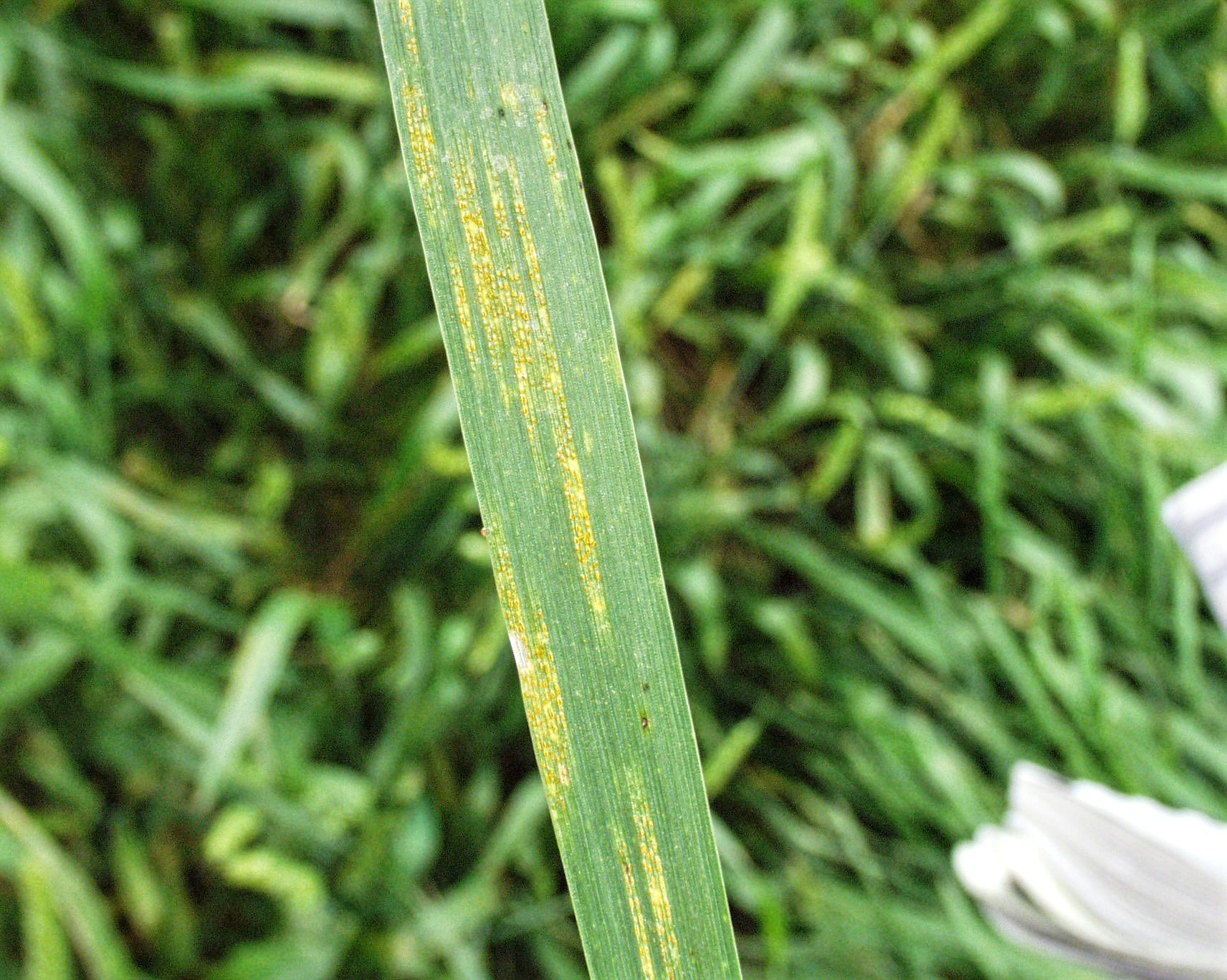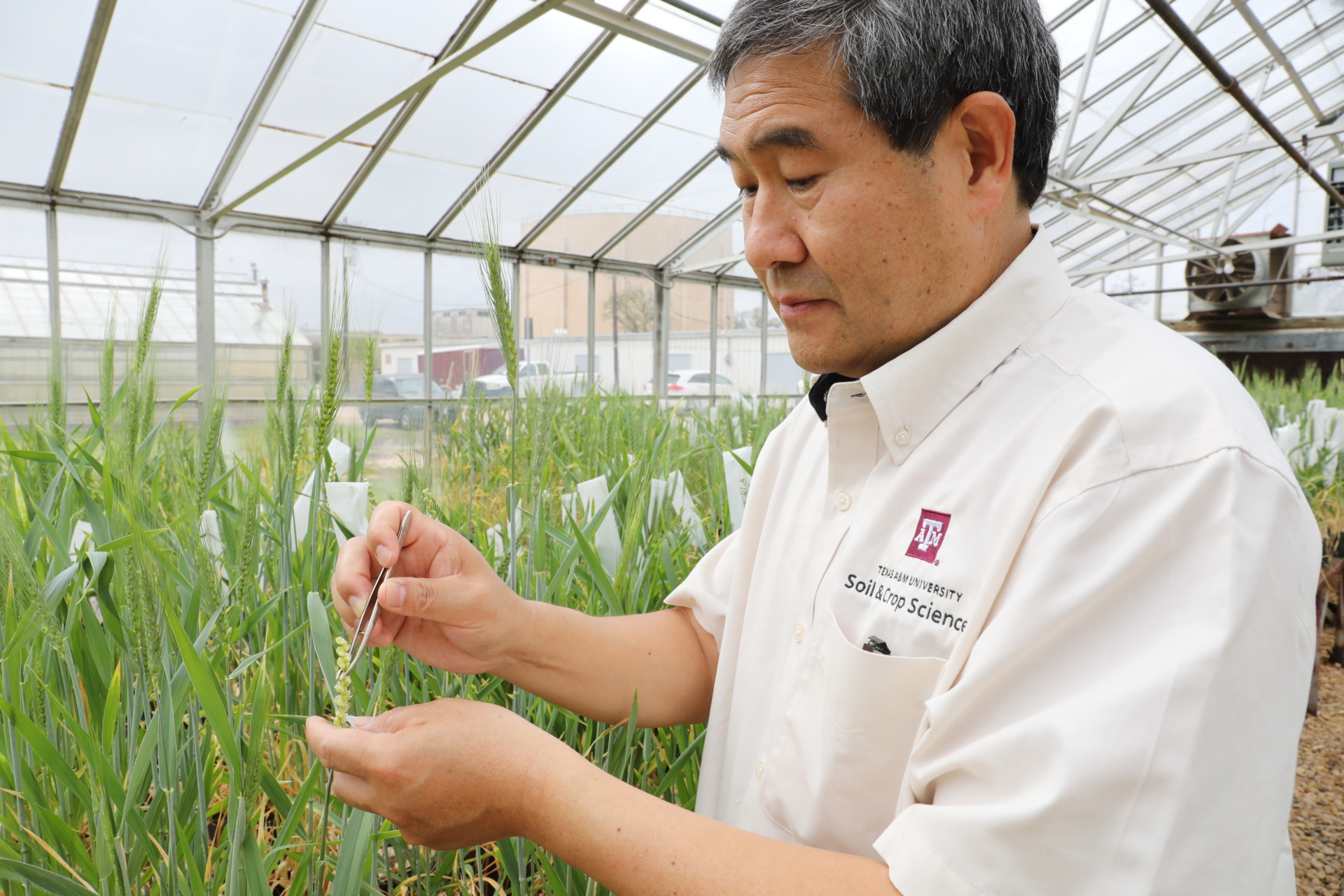Wet weather may trigger serious wheat rust issues — or maybe not
Writer: Steve Byrns, 325-653-4576, s-byrns@tamu.edu
Contact: Dr. David Drake, 325-653-4576, d-drake@tamu.edu
SAN ANGELO – The prime wheat growing conditions throughout much of Texas this season should be a boon to most producers, but it could prove to be a bust for those not watching their crop closely, said a Texas A&M AgriLife Extension Service expert.
“Growing conditions for wheat have been excellent through the winter, but moist conditions also brought disease,” said Dr. David Drake, AgriLife Extension agronomist at San Angelo. “The potential for an outbreak of rust, a fungal disease, exists in Central Texas, and treatment may or may not be cost-effective depending on each field’s unique set of factors.”
Drake said high levels of stripe rust have been seen in many fields of seedling wheat with the orange powdery spores that earn the disease its name coating lower leaves and the boots of those walking through affected fields.
“This in itself shouldn’t be too alarming as many rust-resistant wheat varieties get the disease on seedling leaves, but not on the upper leaves and if they do, oftentimes it’s not spreading,” he said. “So before breaking out the fungicide, producers should be sure what they have is actively growing rust that will damage a potentially profitable crop.”
Drake said to evaluate a crop for treatment, producers should:
— Determine if the crop’s yield potential justifies the expense.
— Is the wheat a rust-susceptible variety?
— Is the disease actually present or has it been identified nearby?
— What is the plant growth stage?
— What are the predicted moisture and weather conditions?
— What treatments are available, what do they cost and when will they actually be applied?
“There are many area fields correctly being treated for these reasons, but there are also many that should not be treated due to one or more of these factors going against the success of the treatment,” he said.
Drake said results of annual AgriLife Extension wheat variety trials invariably fail to show an advantage to treating a resistant variety with a fungicide. Conversely, susceptible varieties with good yield potential have shown increased yield and test weights over several years of treatments.
“In the Concho Valley and Big Country areas, the last flag leaf is just beginning to emerge or has just emerged,” Drake said. “This leaf must be protected if good grain yields are to be produced, so right now is the time to decide what, if anything, needs to be done.”
Drake said specific information on rust and decision aids can be found at http://sickwheat.tamu.edu or at http://sanangelo.tamu.edu/agronomy or http://varietytesting.tamu.edu/wheat. Drake can be reached by email at drdrake@ag.tamu.edu .




